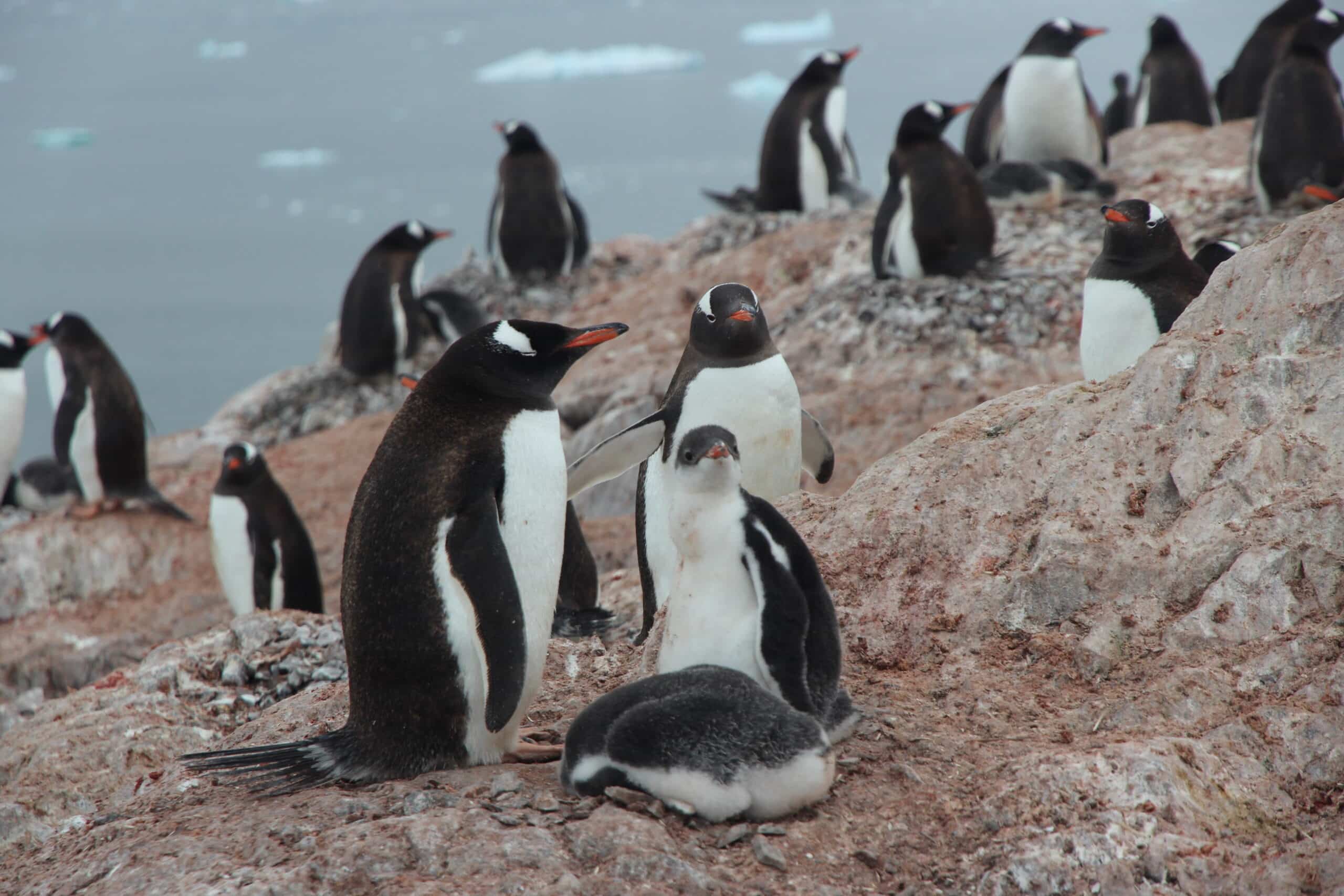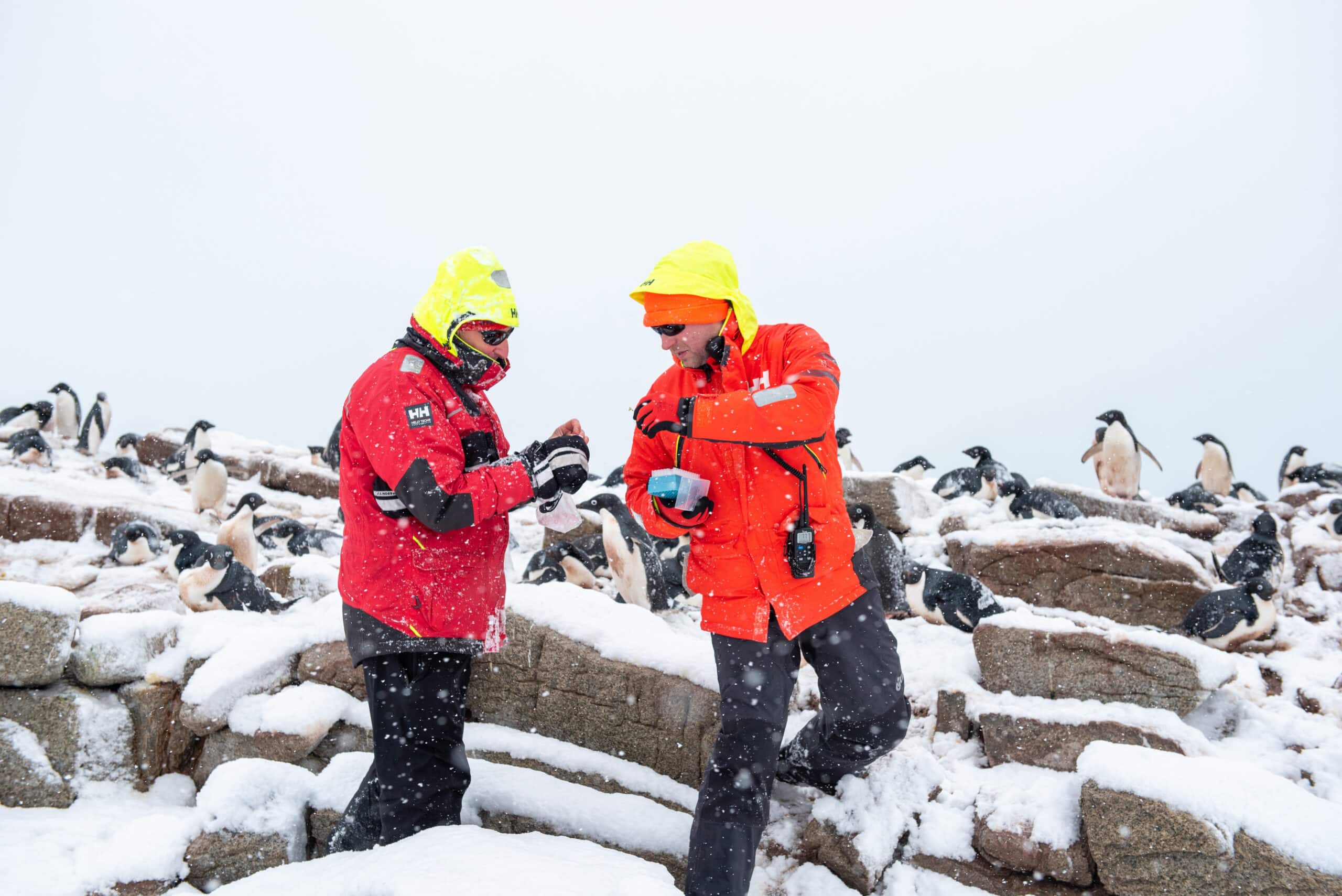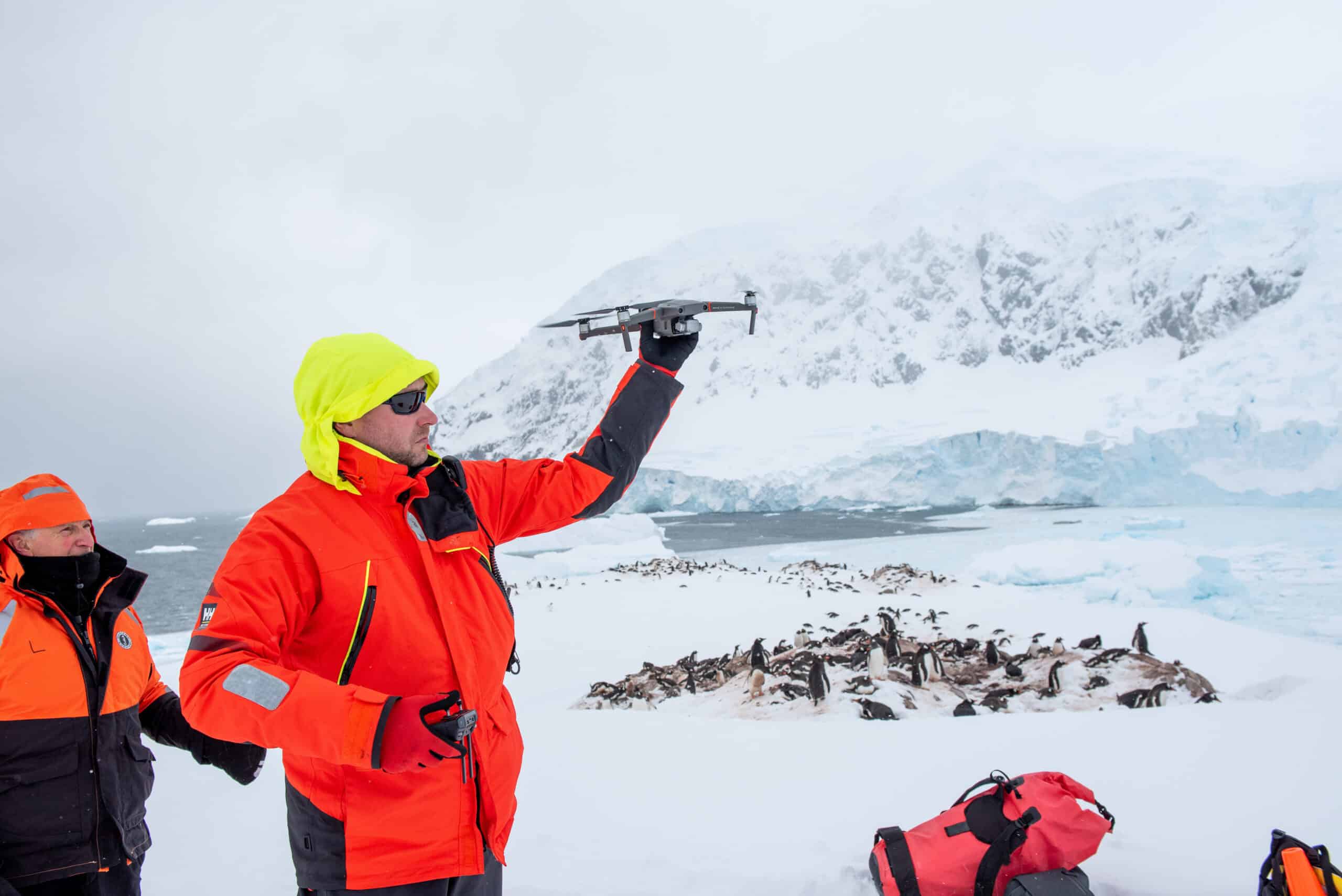In this episode of the Good Natured podcast, we get to know “penguinologist” Dr. Tom Hart, who works as a research fellow at the Department of Biology at the University of Oxford. Employing a broad range of tools and tech, he and his team work towards increasing our understanding of penguins to conserve them in the wild.

Gentoo penguins – one of the three focal species of Penguin Watch. Credit: Tom Hart
Diving into the world of penguins
Tom describes his work as “fundamental research into penguin populations with a strong conservation bent”. When populations of a single species show contrasting trends in different areas, he feels fundamental research is essential to fill conservation-relevant knowledge gaps.
Tom explains that penguins face multiple threats, although he and his colleagues debate over which threat is the biggest. For example, climate change is a global phenomenon with drastic impacts on polar habitats. A difference of one degree can result in distinct habitat change between sea ice and open water, so the impacts of climate change are omnipresent – “…everything, from their prey to breeding sites”. However, local drivers like fishing, direct human disturbance, and pollution could also have profound negative impacts on penguin populations.

Alex Kacelnik and Tom Hart collecting penguin faecal samples at Red Rock Ridge, Antarctica. Credit: Daley Clark
Tom says “inside Antarctica, fisheries are definitely a major threat”, however, he mentions that identifying clear drivers is difficult and complex. The loss of sea ice increases the accessibility to fishing vessels, hence making it unclear whether climate change or fishing or both affect penguins and to what degree. Tom describes that the negative effect of fisheries on penguins is most likely driven by competition for food, as fishing close to a penguin colony not only reduces the amount of prey for the penguins but also the amount of prey within an easy foraging distance from the colony.
Owing to on-the-ground conservation efforts like rodent eradication, Tom feels optimistic about the natural penguin population in sub-Antarctic areas like South Georgia. With a recovery in king penguin populations after historic disturbance and the natural decline of macaroni penguins, Tom says “I see improvement in sub-Antarctic”. Appreciating the presence of marine protected areas around South Georgia and the South Sandwich Islands, he emphasizes the control and mitigation of the fishing industry and the establishment of marine protected areas. However, he is less hopeful about the temperate areas of South America and South Africa, where he says the penguin story is a bit more complicated. This is because some species are declining while others are increasing in number depending on their prey, which is in turn affected by either climate change or fishing.
Home away from home
Hearing about his work, one might believe a penguinologist’s work with field sites in the remote corners of the world would be a rather lonely pursuit. In fact, he works closely with the tourism industry to take lifts to his remote field sites, hence spending a lot of time surrounded by people! Detailing his research methods, he explains that visiting his field site for even three hours is enough for him to leave time-lapse recording cameras, collect poop samples or even fly drones to survey populations.

NG Endurance, team’s transportation and base for fieldwork, cruise, and yacht collaboration. Credit: Tom Hart
However, in sites that need longer monitoring, the researchers get dropped off for longer duration which could involve camping in a hut with three to four people. Given the nature of their work and remote field sites, Tom’s work often includes collaborations with other scientists to fill big data gaps or undertake intensive surveys. He expresses that building tight friendships during these difficult expeditions is one of the clear positives of such remote working conditions.
Technological ties revolutionizing science and life

Tom’s team uses AI-powered drones for regular population surveys. Credit: Daley Clark
Talking about his love for fieldwork and the outdoors, Tom says that technology is a great way to bridge the gap between remote fieldwork and comfortable daily life. “You’re not just limited to the books you can carry any more. Same with music.” Similarly, his research has a multi-fold link to technology – be it the citizen science platform penguinwatch.org, where people process images to identify penguins, or his team combining drone technology with Artificial Intelligence to count and record the locations of every nest in every colony!
Tom’s work is inspiring to many others but he himself is inspired by another conservationist, Sally Poncet, a pioneer of big projects like the rodent eradication program. Talking about this unsung hero who drove a lot of Southern Ocean projects, Tom is most inspired by her drive. “A lot of local heroes are local”, Tom says while highlighting that most of the inspiring conservationists are not big academics working on large-scale issues but rather people quietly labouring away on local problems until they are fixed.
To learn more about Tom, his exciting work, and penguins, listen to our podcast.

